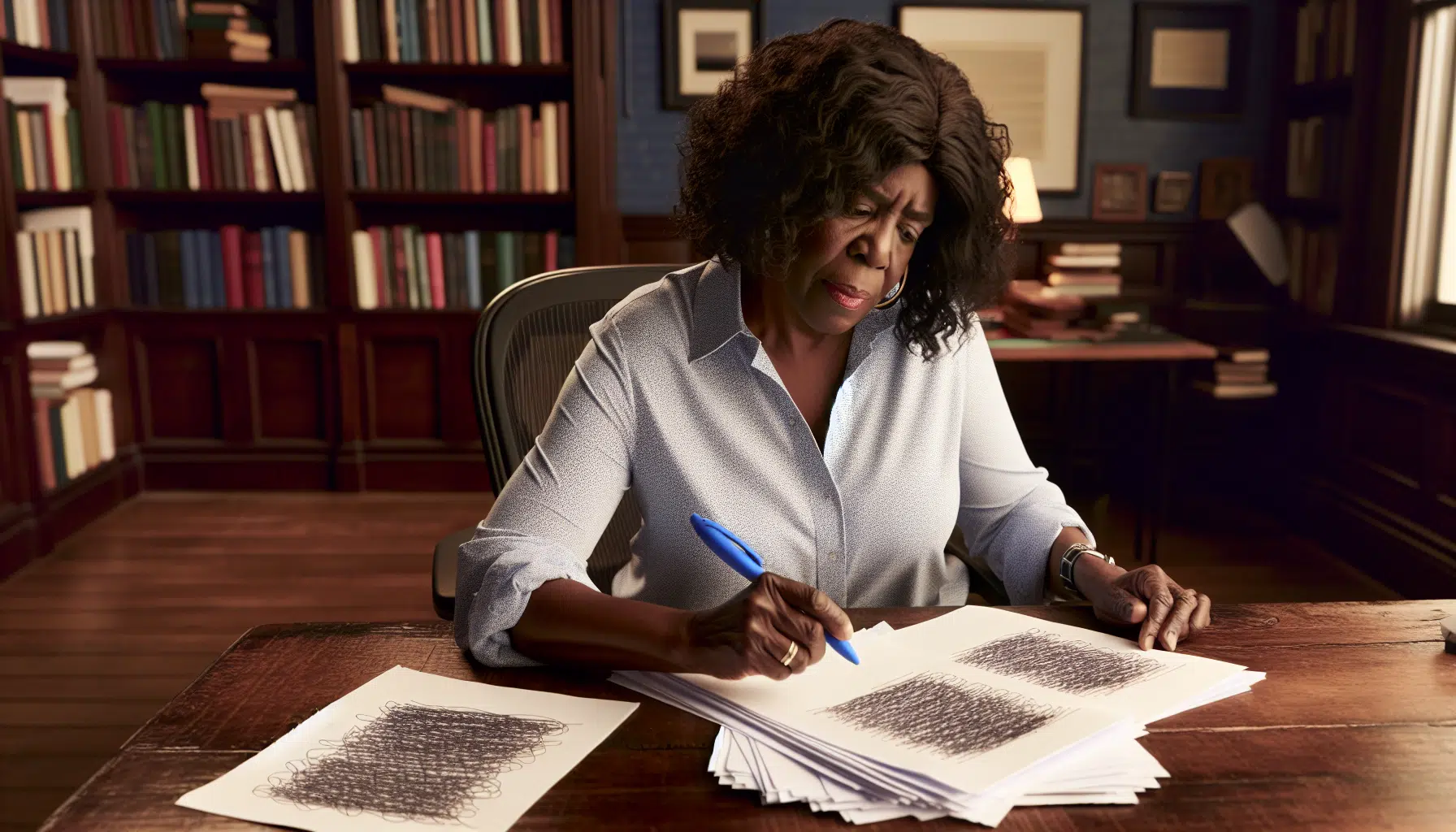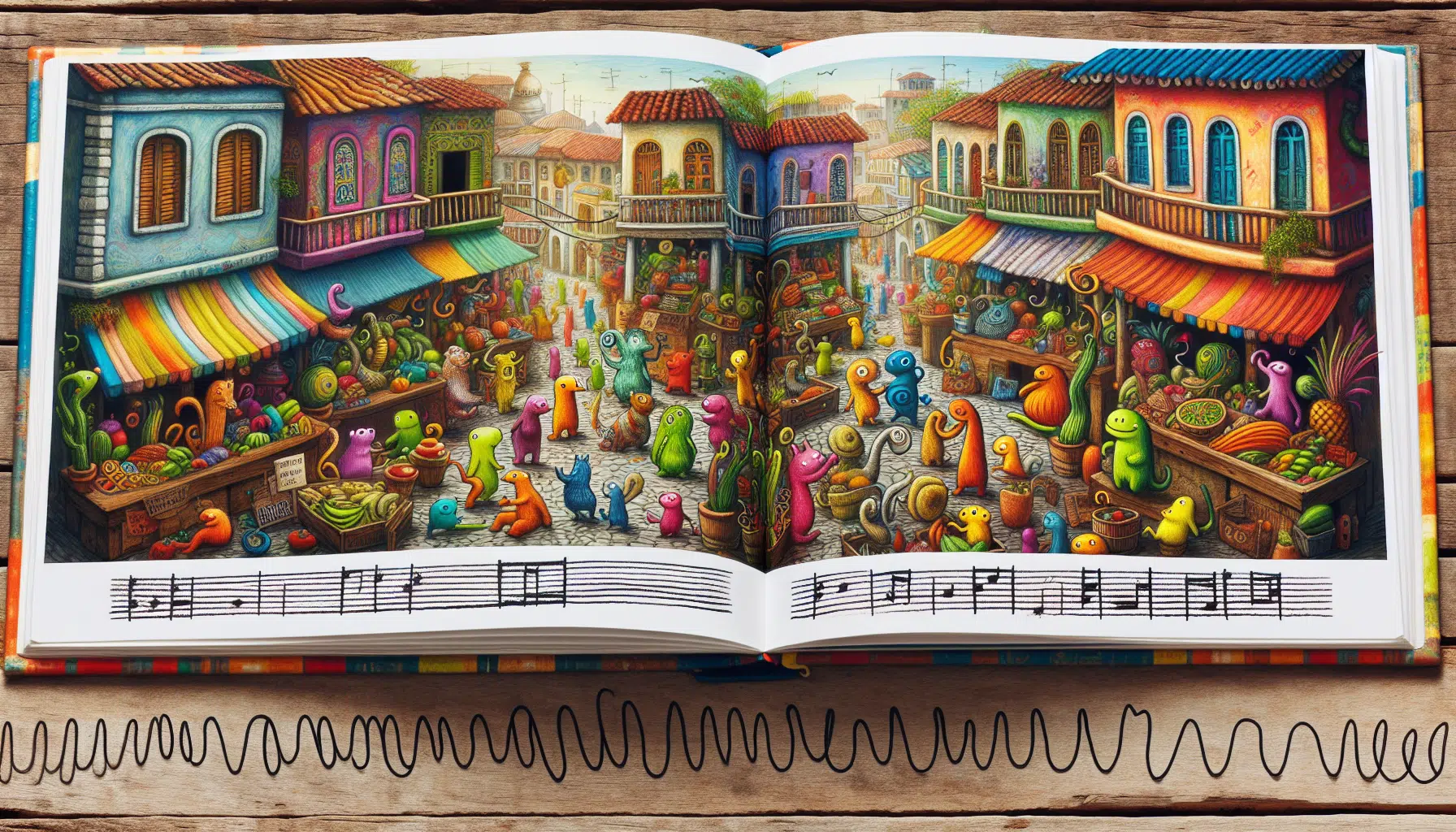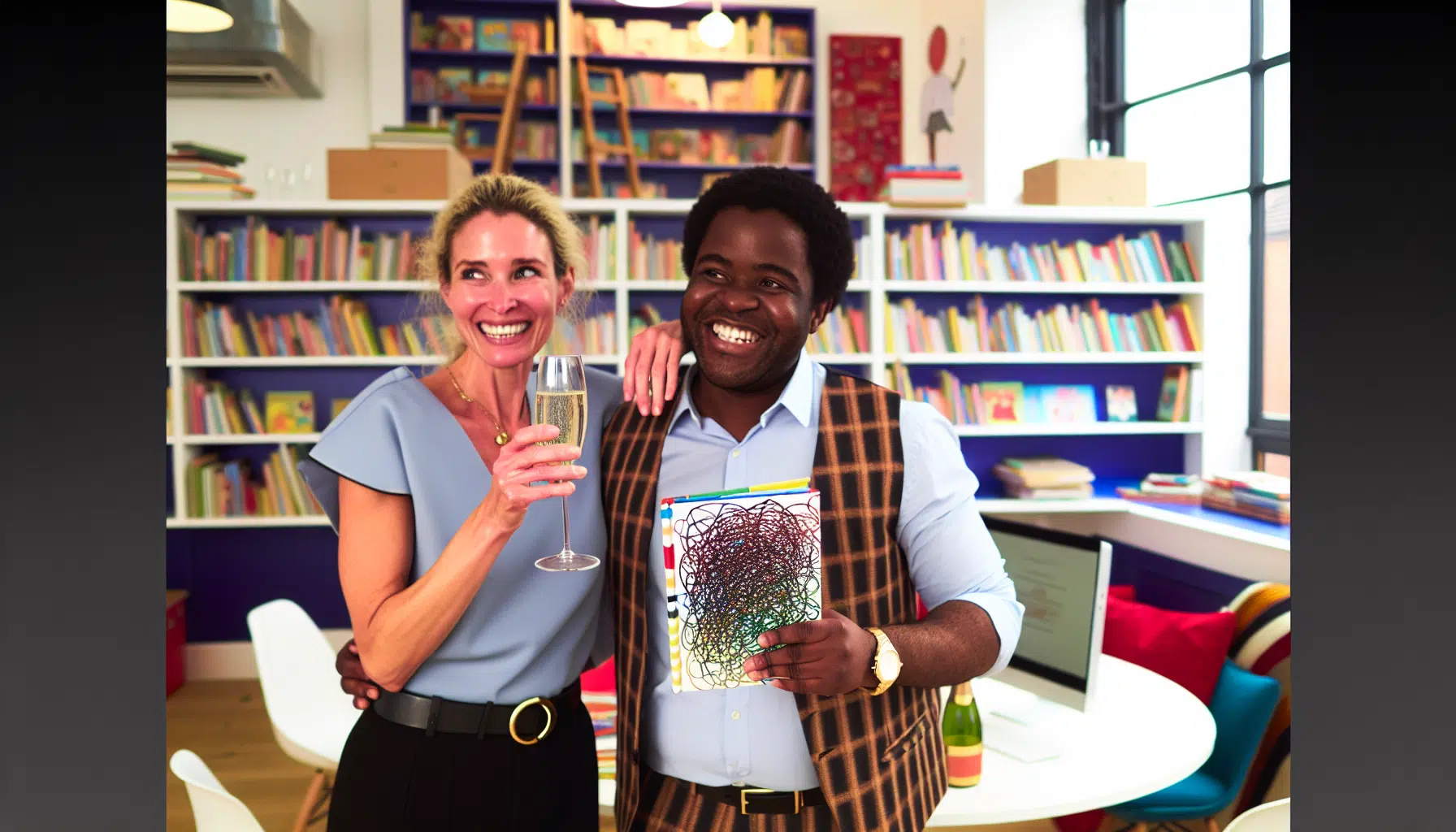Identifying the right children’s book editor is essential for authors aiming to captivate their young audience. These specialized editors not only correct grammatical issues but also fine-tune the story’s flow, characters, and age-appropriate language. Discover the significance of a children’s book editor, learn about the collaborative process with authors, and gain insights on choosing the one that aligns with your book’s vision.
Key Takeaways
A children’s book editor’s role is comprehensive, covering developmental and copy editing, providing constructive feedback, and aligning the text with visuals to ensure the story is appropriate and engaging for the target age group.
Children’s literature requires editors with specialty knowledge in genre-specific characteristics, from picture books to young adult novels, each demanding a tailored editorial approach for language complexity, thematic content, and illustration-text integration.
The editing process is a collaborative effort between authors and editors, with professional editors offering crucial industry insight, writing style expertise, and objective feedback that is essential for preparing a manuscript for successful publication.
The Role of a Children’s Book Editor

A children’s book editor’s role goes beyond simple proofreading. They architect the story, mold the characters, and tailor the content to the target age group. These erudite individuals review not only the text but also the illustrations and page layouts to ensure they harmonize with the narrative and offer guidance to illustrators.
They are experts in grammar, punctuation, and sentence structure. During the copy editing phase, they meticulously proofread the manuscript to enhance its overall quality and appeal. Their backgrounds often span English, communications, or journalism, buttressed with experience in child development or education, fine-tuning their editorial skills.
Developmental Editing
Developmental editing is a collaborative and in-depth process that focuses on elevating the manuscript’s quality by addressing major components and their integration. It involves local edits throughout the manuscript and assists authors through revisions to deliver a well-rounded draft.
The aim of developmental editing is to uplift the author’s work to its highest potential through:
Honest, constructive feedback
Thorough in-line manuscript edits
Improving dialogue, sensory descriptions, narrative voice, language, pacing, and syntax
Addressing broad editorial concerns like thematic consistency, age appropriateness, plot structure, and character arcs
Developmental editing covers it all.
Copy Editing
Copy editing is the next step after developmental editing. This critical stage involves:
Rectifying typographical and grammatical errors
Ensuring consistency throughout the text
Checking for continuity from scene to scene
Ensuring consistency in character descriptions
As the rules of book publishing evolve, so does the importance of grammatical acceptability, making copy editing an essential aspect of the editing process.
In traditional publishing, editors are tasked with proofreading and editing the text to confirm proper spelling, punctuation, syntax, and overall coherence, all crucial elements for children’s literature. Therefore, choosing an editor who rigorously follows submission guidelines is paramount, reflecting their attention to detail and thoroughness.
Collaboration with Authors
Transitioning a manuscript into a published book is a collaborative endeavor between the author and the editor. This collaboration is central to understanding each other’s perspectives and working together successfully. Authors, as professionals, are open to substantive, helpful notes and desire to be part of the editing process. Transparent communication about each party’s influence on decision-making and setting realistic expectations enhances this relationship.
The aim is for both parties to stand proudly behind the published books, which requires understanding the significance of each other’s roles.
Types of Children’s Books and Their Unique Editorial Needs

Children’s literature spans a broad spectrum, from delightful picture books for toddlers to complex young adult novels. This diverse world of children’s literature requires editors to often specialize in specific genres, bringing their unique skillsets to the table. Their experience as children’s librarians or library technicians is highly valued for their specialized knowledge in the field. An editor’s understanding of the differences in writing for age groups ranging from toddlers to young adults is crucial for tailoring their editorial approach.
In traditional publishing, editors work with subject matter experts and fact-checkers to ensure content is accurate and suitable for the intended child audience.
Picture Books

In picture books, the harmony between text and illustrations is vital for storytelling. When creating a picture book manuscript, editors help maintain age-appropriate content while working within limited word counts to ensure stories are engaging and clear for the intended age group. The composition of a page and effective use of space is critical for the layout of text and illustrations in self-published children’s picture books.
Also, editors review illustrations to ensure characters look consistent and that the text aligns with images, considering art notes and suggestions for text placement.
Chapter Books
Chapter books for young readers require accessibility in vocabulary and sentence structure, aiding their transition from picture books to more text-centric reading. Editors must strike the right balance between simplicity and storytelling, often utilizing humor, adventure, and relatable characters to captivate young readers.
Creating manageable chapters within chapter books is an essential part of the editorial process, giving early readers a sense of accomplishment and encouraging continued reading. Maintaining a consistent reading level throughout a chapter book is vital, a responsibility that falls on the editor to ensure the reader remains confident and interested.
Middle Grade and Young Adult Novels
Middle grade novels and young adult novels, often categorized as literary fiction, delve into themes of friendship, family, and self-discovery, which must be conveyed in ways that resonate with young readers and contribute to their personal growth. Editors of middle grade novels focus on fine-tuning the pacing and language of the story to fit the comprehension and interest levels of readers navigating the transition from childhood to adolescence.
How Professional Children’s Book Editors Enhance Your Manuscript

Professional children’s book editor services go beyond mere editing, including picture book editing services. Their comprehensive services include:
Manuscript rewrites
Industry knowledge
Writing style expertise
Objective feedback
Insights on various publishing options
These services can significantly enhance a manuscript and guide authors toward a more successful publication outcome.
Made for Kids brings editing talent from comprehensive non-fiction titles as well as children’s book editors, providing an optimized set of skills for any manuscript editing task.
Industry Knowledge
A professional children’s book editor’s understanding of contemporary children’s literature is crucial in offering pertinent advice to authors. Editors need to be aware of the diverse and changing market for children’s books to guide authors in targeting the right audience, which may include children, parents, teachers, or librarians. Assessing whether an editor is knowledgeable about the current market for contemporary children’s books, including age appropriateness, language, and illustration, is pivotal for the success of the book.
Consultations with seasoned professionals like Bryan Heathman can provide valuable insights into the book industry, including agents, editors, and current market trends, which are crucial for the success of a children’s book.
Expertise in Writing Style
A children’s book editor uses detailed line-by-line reviews to ensure the manuscript’s voice is consistent and appropriate for the target age group. For young adult novels, editors focus on authentic voice and characterization, aligning with the expectations of older readers who seek depth and relatability in protagonists.
Editors aid in perfecting rhyme and meter in children’s books written in verse, contributing to the story’s readability and enjoyment. The skill of an editor in bringing out originality and spark in a manuscript is crucial for distinguishing your book in a competitive market.
Objective Feedback
Children’s book editors offer unbiased feedback, which is crucial for refining a manuscript for publication. The objective perspective of children’s book editors is crucial in crafting a well-rounded story, especially given the typical word count limitations in children’s books.
Both authors and editors are emotionally invested in the performance of the published book, enhancing the importance of objective, expert feedback through an editorial assessment for a successful outcome.
Hybrid Publishing, Self-Publishing vs. Traditional Publishing: The Role of the Children’s Book Editor
The responsibilities and tasks of a children’s book editor differ between hybrid, self-publishing and traditional publishing houses. In self-publishing, a children’s book editor helps shape the manuscript through developmental editing but may not be involved in the entire process until publication. Self-published authors rely heavily on copy editors to ensure a polished final product, while traditional publishers provide in-house editorial staff to handle these tasks.
However, in traditional publishing, editors often review manuscripts or query letters, a step that is not part of self-publishing. A hybrid publishing company like Made for Kids is designed to manage all the details for you, from editing to professionally published children’s book.
Self-Publishing
Self-publishing authors hire professional children’s book editors to refine their manuscripts, ensuring an error-free and polished final product before publishing or submission to agents. Copy editing for self-published children’s books should ideally be done by a second editor to provide a new perspective and improve the chances of catching any remaining issues. Authors bear the responsibility of making sure their children’s books are appropriate for the target age group in content, tone, and language, with professional editors guiding them. To aid in the creation and self-publishing process, tools such as Blurb’s BookWright and Adobe InDesign plug-in offer robust design capabilities to authors. Authors can customize their self-published children’s books and receive printed copies through packages that facilitate choices in formats and presentation, including options for hardcover.
Self-published children’s books can be marketed across various platforms, including the author’s own website, online marketplaces like Amazon, and even local bookstores. However, a self-publishing solution puts the onus of distribution, editing, and promotion entirely on an author. Working with a smaller, experienced hybrid publishing team is often the better fit for an author who isn’t experienced in these highly-competitive domains.
Traditional Publishing
In the realm of traditional publishing, acquisitions editors evaluate book proposals and manuscripts to decide which titles the company should publish. Editorial teams work collectively to keep the publication of a book on schedule, coordinating the different stages of production and adhering to deadlines. Editors can have distinct areas of expertise within a traditional publishing house, such as acquisitions, copy editing, or developmental editing.
Editors want authors to understand their deep investment in the book’s success and that they manage multiple titles simultaneously, not working in isolation for any single publication in the publishing industry.
Choosing the Right Children’s Book Editor for Your Project
Selecting the appropriate children’s book editor for your project is a significant decision. This decision involves:
Research
Communication
Compatibility
Considering budget and timeline constraints
It is important to consider the different types of editing available, such as technical and developmental editing, to best suit the needs of your children’s book project.
Identifying children’s book editors with strong educational backgrounds in English, communications, journalism, or related fields, as these qualifications are commonly required for effective editing. Also, identifying children’s book editors with a demonstrated broad array of experience is beneficial.
Research and Recommendations
Begin your search for an editor by:
Examining editors’ websites, perusing their ‘About Me’ sections, and analyzing their testimonials to comprehend their experience and expertise.
Assessing potential editors by reading reviews from other authors and evaluating their understanding of the language and content suitable for your target reader.
Confirming that the editor has experience editing children’s books in your specific format and can provide the editorial services you’re looking for.
Communication and Compatibility
Open communication is vital when collaborating with an editor; authors should actively connect with potential editors to assess their responsiveness and interaction style. Assessing an editor’s availability and willingness to work outside of traditional hours can be important for authors, especially when dealing with different time zones.
Authors expect editors to communicate clearly and honestly, setting realistic deadlines and keeping them informed about the progress of the manuscript, including marketing efforts.
Budget and Timeline
Managing the financial aspects of hiring an editor is another significant consideration. Editing a picture book through freelance websites may cost around $250, but prices can vary widely depending on the complexity of the project and the editor’s experience. Using freelance sites for editing services can incur higher costs due to platform commissions affecting both the editor and the author.
It is crucial to ensure that the editor can adhere to your project’s timeline to prevent any delays in receiving feedback or the completed manuscript. Before commencing work with an editor, secure a detailed contract that clearly outlines the scope of editing services, fees involved, and expected timelines for completion.
Made for Kids: A Trusted Partner in Children’s Book Publishing

Made for Kids is a dedicated children’s book publishing imprint under Made for Success, aiming to ignite literary passion among young readers. By providing a results-driven program designed to support ambitious authors through the end-to-end publishing process of their books, Made for Kids has become a trusted partner in children’s book publishing.
Made for Kids aims to empower authors by assisting them in establishing their children’s books as noteworthy in the marketplace. Publishing with Made for Kids implies a mark of distinction, offering an imprint seal that signifies a children’s book of higher market quality.
Editorial Review
A bonus of partnering with Made for Kids is their free editorial review of manuscripts. This valuable service allows authors to receive professional feedback on their work, which can greatly enhance the quality of their manuscript.
Publishing Services
Made for Kids, a dedicated children’s book publisher, offers a comprehensive suite of services tailored for self-publishing children’s book authors, including:
Pre-publication fundamentals
Copy-editing
Layout proofing
Book cover design
These services ensure high-quality manuscript preparation.
Additional services offered by Made for Kids include:
Interior layout graphics
Audiobook production
Copyright registration
eBook development
Paperback or hardcover distribution
These services are designed to assist authors at all stages of publishing. Made for Kids also supports authors with marketing campaigns and provides weekly sales reports to track the success of their published work.
Marketing Support
Recognizing the ideal customer and comprehending their online habits and interests are vital steps for successful children’s book marketing. Here are some effective marketing strategies for children’s books:
Engaging with the ideal customers through attendance at relevant conferences and festivals
Guest blogging on related websites
Targeting social media advertising
By implementing these strategies, you can effectively reach and engage with your target audience.
Marketing published children’s books involves nuanced campaigns that cater to adult buyers while appealing to the children who will be the readers, highlighting the genre’s unique marketing challenges.
Summary
Children’s book editors play an integral role in creating enchanting books that delight young readers. From developmental editing to copy editing, they polish a manuscript, ensuring it resonates with its target audience. Choosing the right editor, be it for self-publishing or traditional publishing, is crucial to the success of your book. Made for Kids stands as a trusted partner in children’s book publishing, offering comprehensive services to authors, from editorial review to marketing support. Your journey to becoming a successful children’s book author starts with aligning with the right editor.
Frequently Asked Questions
How to become a children’s book editor?
To become a children’s book editor, you’ll need a degree in a related field, seek editorial and publishing opportunities, take training courses, develop your portfolio, and apply for editorial positions, eventually earning a promotion to book editor. Additionally, a strong command of written language and an understanding of child development are crucial. Avoid artifacts like the Wikipedia link at the end.
How do I find an editor for a children’s book?
You can find an editor for a children’s book by using freelance sites like Reedsy or the Editorial Freelancers Association to find freelance editors specializing in children’s books. Good luck with your search!
What does a children’s book editor do?
A children’s book editor is responsible for scouting potential manuscripts and authors, assessing submissions, and making decisions on which books to acquire for their publishing house. They play a critical role in the acquisition process for children’s books.
How much does it cost to edit a children’s book?
It can cost $250 for editing a children’s book of up to 2000 words for text only manuscripts, and $390 for manuscripts up to 6500 words. Additional time may be charged at an hourly rate for longer manuscripts or a more involved consultation.
What is developmental editing?
Developmental editing involves an in-depth collaborative process that enhances the manuscript’s overall quality by focusing on its major components and assisting authors through revisions to deliver a well-rounded draft.

